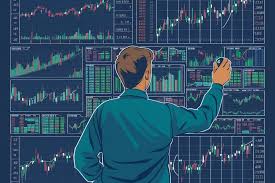Proprietary trading, or “prop trading,” is a high-stakes world where institutional traders invest the firm’s own capital to generate profits, rather than working on behalf of clients. This model offers substantial earning potential for both the firm and the trader—but also comes with unique challenges and risks. To better understand the dynamic nature of prop trading, let’s explore its potential rewards and risks in more detail.
What Makes Prop Trading Unique?
At its core, prop trading is all about using an institution’s resources to take calculated risks for high returns. Firms participating in this practice tend to deploy advanced trading tools, algorithms, and strategies to capitalize on short-term market movements. Unlike traditional brokerage trading, where traders act as intermediaries earning commissions, prop trading empowers traders to execute their own bold strategies without being constrained by client goals. The only goal is profit.
This competitive edge is one significant reason why hedge funds, investment banks, and proprietary trading firms actively engage in prop trading. However, the autonomy and resources offered to traders come with an expectation of performance under significant pressure.
Rewards of Prop Trading
Prop trading is undeniably lucrative for traders and firms alike. One of the most appealing aspects is the potential for outsized gains. Many traders in this space can earn a meaningful share of the profits they generate, creating an enticing financial incentive. With high leverage available to enhance positions, the potential upside becomes even greater.
Another major reward is professional growth. Prop traders often gain unique exposure to cutting-edge technology, advanced analytics, and high-frequency trading systems, sharpening their skills in a fast-paced environment. Firms also provide significant training programs, giving traders access to insights from experienced market professionals.
Additionally, the autonomy offered in a prop trading role is particularly appealing. Traders have the freedom to develop innovative strategies and make independent decisions, fostering a high degree of creativity within a structured system.
Risks That Cannot Be Ignored
Despite the attractive rewards, prop trading is not for the faint-hearted. The most obvious risk is financial loss. The same leverage that magnifies profits also amplifies losses, creating substantial volatility in returns. A single miscalculation can lead to sizeable losses, both for the trader and the firm.
Another challenge involves the intense pressure of working in an outcome-driven role. Traders are not only held accountable for their results but must also consistently demonstrate strong performance to retain their role. This can be mentally taxing, with long hours and high stress becoming a routine part of the job.
Market conditions also play a key role in the risks associated with prop trading. Sudden shifts in the market, unexpected geopolitical events, or reduced liquidity during key times can create unexpected challenges for even the most skilled traders.
Finally, regulatory changes add another layer of uncertainty. Governments and institutions continuously adjust financial regulations, which can limit trading strategies or alter the overall landscape of prop trading.
Striking a Balance in Prop Trading
To thrive in the competitive world of prop trading, traders must weigh the potential rewards against the inherent risks. A successful prop trader is not just skilled in technical analysis and strategy but also resilient in the face of high-stakes pressure. For institutions, managing risk effectively while empowering their teams is critical to ensuring sustainable success.
By combining sharp market insights with disciplined risk management, prop trading can deliver extraordinary opportunities. However, it’s essential to recognize that those rewards come at a price—not just in terms of financial risk, but also in the mental endurance required to operate in this competitive, high-paced industry.
